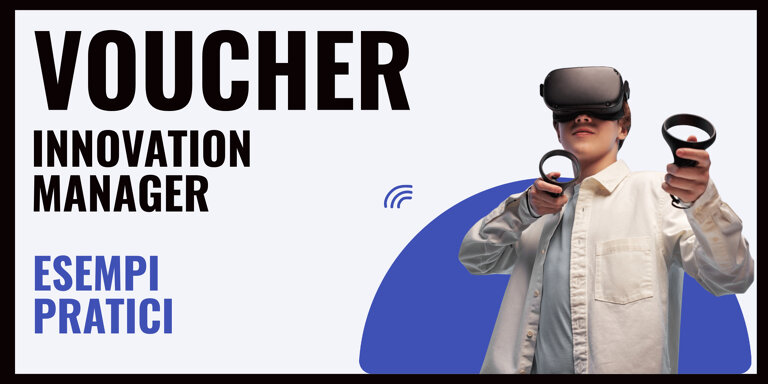What is customer acquisition cost
Customer acquisition cost represents the investment required to find new customers for your business. Understanding how much you need to spend to acquire a single new customer is crucial for planning a marketing budget to grow your business.
Even if we talk about cost, the most suitable word is the word "investment" in fact the CAC should not be considered as an expense but as an investment necessary to obtain results. Ultimately, you have to realize that you can't find new customers without investing money and time.
How to calculate customer acquisition cost
For most companies operating in b2b, the costs of acquiring a new customer (CAC) are determined by two factors:
- The costs of generating a lead (generally determined by marketing expenses and the tools needed);
- The costs of converting the contact who turns into a new customer (generally the man-hours spent in the follow-up and qualification phase of the contact and all related costs);
Typically, the easiest way to calculate the cost of acquiring a single new customer is to group the total sales and marketing expenses over a given time period (period t) and divide it by the total number of new customers:
CACt = Costs of (sales + marketing) / # New Customers
For example, if you spent €5,000 as marketing and sales costs over a given period, and you closed 10 new customers in the same time period, that month's customer acquisition cost would be €1,000. Knowing the CAC is important, because it allows you to assess the return of investment (ROI). In practice, it means: Investing an amount to measure what economic result follows.
What it does: Reduce expenses and increase earnings
Whatever your business, you need to calculate the cost of customer acquisition, to understand what price to charge for the sale of a product or service and how to optimize expenses to increase earnings.
Reducing the value of the CAC means that the company is spending money more efficiently and consequently should have higher returns in terms of total profit.
If you have an inbound marketing program in place that works properly, you won't waste money on advertising expenses generating unqualified leads if your blog content brings in high-quality organic leads on an ongoing basis. If your sales team is focused on qualified leads, the cost of customer acquisition will be greatly reduced. Clearly the goal is to lower the CAC as much as possible.
And this happens through the improvement of several points. First of all, you can focus on loyalty: a contact who is enthusiastic about your product or service will continue to buy from you on a recurring basis.
Once you've calculated the CAC for your company, you can compare this value to other key business metrics. This way, you can make more informed considerations about your marketing, sales, and customer service campaigns.
The Value of a Customer
A customer's value is referred to as Customer Lifetime Value (CLV) represents the customer's lifetime value. In practice, it is the expected turnover that a customer will generate over the course of their relationship with a company.
To calculate CLV, you'll need to calculate a few variables to put into the final formula:
Average purchase value: Calculate this number by dividing your company's total revenue over a period of time (usually one year) by the number of purchases over the same period of time.
Average purchase frequency: Calculate this number by dividing the number of purchases over the time period by the number of unique customers who made purchases during that time period.
Customer value: Calculate this number by multiplying the average purchase value by the average purchase frequency.
Average customer lifetime: Calculate this number by averaging the number of years a customer continues to buy from your business.
So to calculate the CLV you will have to multiply the Customer value for the average customer lifespan. This will give you an estimate of how much revenue you can reasonably expect an average customer to generate for your company during the partnership.
Comparison between CLV and CAC
Therefore, your company's CLV / CAC ratio can be a very quick indicator that allows us to calculate the value of a customer compared to how much its acquisition costs.
In practice, this allows us to make some reasoning: If the cost of acquiring a CAC customer is high compared to the value of the product service sold, this could initially be deleterious if the customer does not return to buy from us.
On the other hand, if we manage to build customer loyalty and make sure that we have recurring billings, we can also accept a CAC that is high compared to the value of the individual product or service sold in the first economic transaction.
ROI: the return on investment
Return on investment (ROI) is a measure of the profit made from each investment, calculated as a percentage.
There are several ways to calculate ROI for a marketing campaign. Depending on the type of business, you may prefer one over the other. However, the simplest formula for calculating ROI that anyone can use is this:
Let's take an example: let's say your company has invested €5000 in a particular marketing campaign. This campaign generated €12,000 in additional sales for your company. Now let's put those numbers into the formula:
(12,000 – 5000) / 5000 = 1.4 = 140% ROI
This means that for every euro you put into this marketing campaign you get one euro back and then an additional €1.40
This is great for businesses that sell one-time products or services, but what if your business model is based on recurring sales? In this case, you may be interested in using the Customer Lifetime Value (CLV) formula instead.
There are different versions of this formula that can be as detailed and complicated as you need, but without going into complex formulas we can calculate the ROI in the case of recurring sales through the following formula:
ROI = (Customer Lifetime Value – Marketing Investment per Acquisition) / Marketing Investment per Acquisition
Here's a very simple example: let's say your average customer subscribes to your service for 12 months and earns an average of €100 per customer.
This means (in simpler terms) the average customer lifetime value is €1,200 (€100 * 12 months) Now let's say your marketing campaign costs you €1,000 per month and acquires 4 new customers every month.
This means an average cost of €250 for each new customer. ( 1.000 € / 4 customers) Putting those figures into the formula above, we get: (1,200 – 250) / 200 = 3.8 = 380% ROI
It's a very simplified approach, and there are other factors to consider, but you can get an idea of how useful it is to calculate ROI and how to measure the results of one marketing campaign versus another.



